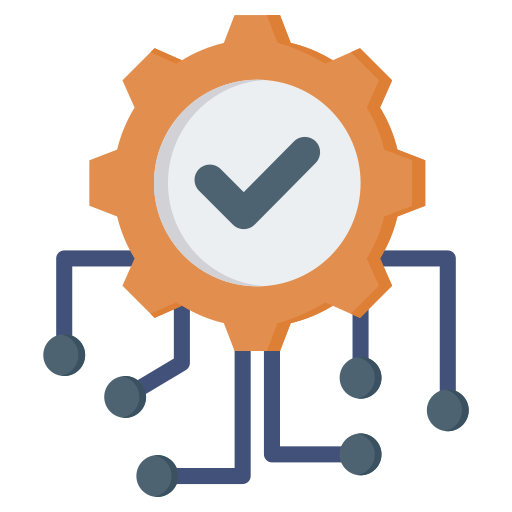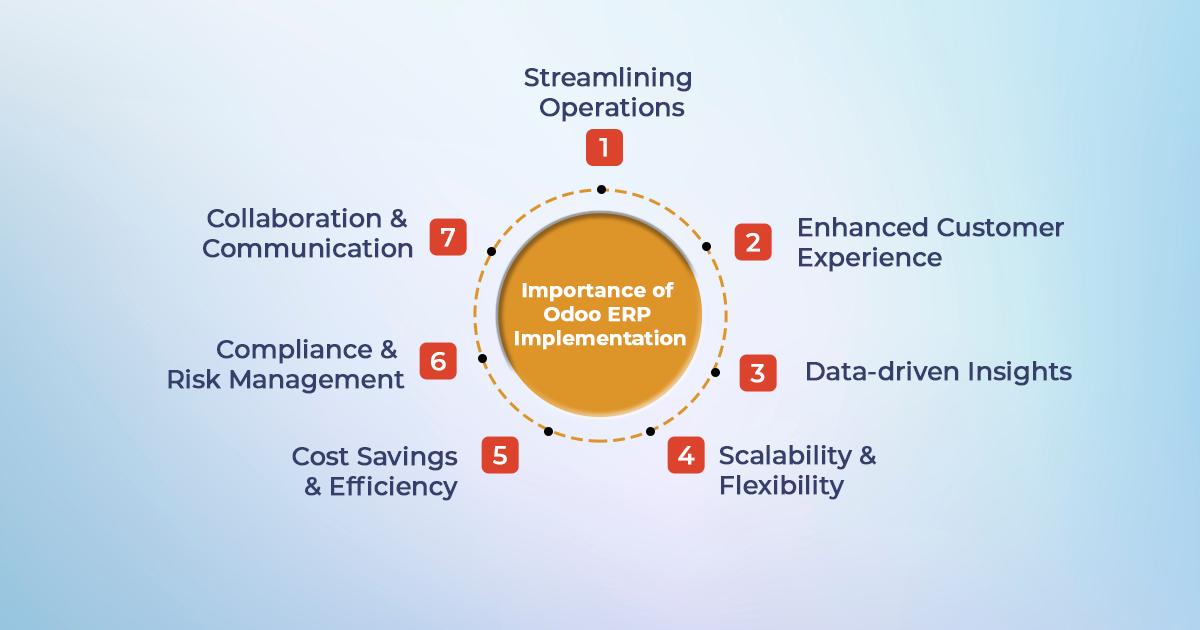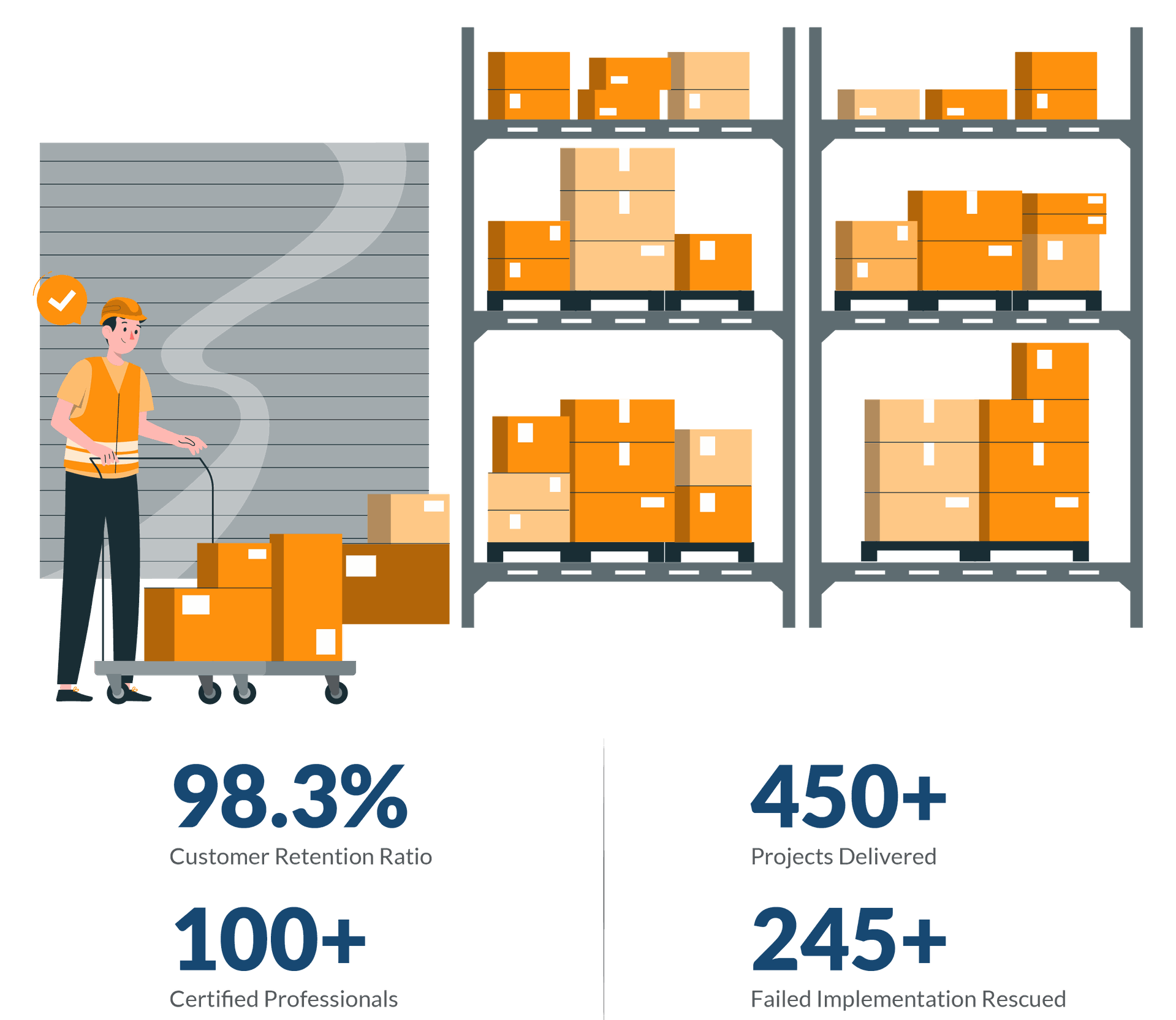Implementing an ERP system like Odoo can be a complex and challenging process, but with
careful planning and execution, it can also be incredibly rewarding for a company. Here, we
will discuss in detail the steps to successfully implement Odoo ERP.
Odoo ERP Implementation
Implementing an ERP system like Odoo can be a complex and challenging process, but with careful planning and execution, it can also be incredibly rewarding for a company. Ideal condition in which steps to follow on successful implementation of Odoo ERP.

Define Goals

Analyze Current State
(Processes, Data, Features)

Gap Analysis & Custom Development

Data Migration & Cleaning

System Configuration & Testing

Go Live & Monitoring
Importance of Odoo ERP Implementation
Implementing Odoo ERP into an organization's existing systems and processes is crucial for several reasons. Discussed here are some of these reasons:

✦ Streamlining Operations
Streamlining and automating company processes is one of the main advantages of Odoo
implementation. Organizations may decrease mistakes, do away with manual data input,
and boost operational efficiency by connecting several modules, including accounting, sales,
inventory, and CRM. For instance, inventory levels may be automatically updated to reflect
sales orders, improving inventory control and lowering the likelihood of stockouts or
overstocks.
✦ Enhanced Customer Experience
Providing outstanding customer experiences is critical in today's customer-focused corporate
environment. Organizations may track interactions, organize client data, and offer
customized services with the help of Odoo ERP connection. Sales professionals may access
client information, purchase history, and preferences through a smooth link between the
CRM and sales modules, for example, resulting in more customized and educated sales
interactions
✦ Data-driven Insights
The capacity to use data to gain actionable insights is a strong argument for Odoo ERP
implementation. Through the consolidation of data from several business activities, firms
may obtain a comprehensive understanding of their performance and operations. They are
then more equipped to recognize patterns, project demand, distribute resources efficiently,
and formulate wise strategic choices.
✦ Scalability & Flexibility
Businesses' operational requirements alter as they develop and expand. Because of its
modular design and implementation options, Odoo ERP is extremely scalable and flexible
enough to accommodate changing company needs. Odoo ERP implementation offers the
flexibility to adapt to these changes, whether they are related to growing into new markets,
connecting with third-party apps, or introducing new functionality.
✦ Cost Savings & Efficiency
In the long run, cost savings and increased efficiency might result from implementing Odoo
implementation. Streamlining procedures, cutting down on manual labor, and avoiding
mistakes allow businesses to cut expenses and redirect resources toward more important
projects. Moreover, increased productivity and better resource usage might result from
having access to real-time data and insights.
✦ Compliance & Risk Management
Adherence to industry norms and regulations is vital in the current regulatory landscape and
cannot be compromised. Organizations may establish audit trails, automate reporting, and
centralize data with the use of Odoo ERP connection to assist compliance. This lowers the
possibility of non-compliance and improves accountability and transparency inside the
company.
✦ Collaboration & Communication
Driving corporate success requires effective teamwork and communication. By offering a
centralized platform for information exchange, activity scheduling, and departmental
teamwork, Odoo implementation promotes smooth departmental communication.
Whether it's exchanging project updates, organizing sales efforts, or agreeing on stock levels,
integrated ERP systems encourage teamwork.
Transform Your Business with Odoo ERP - A Step-by-Step Implementation Guide
Ready to elevate your business efficiency? Dive into our comprehensive guide on successfully implementing Odoo ERP. Streamline operations, enhance collaboration, and boost productivity. Take the first step towards a seamless business transformation. Let's embark on this Odoo journey together!
Steps to Implement Odoo ERP Successfully
There are various essential steps needed to implement Odoo ERP successfully. Discussed below are the necessary steps that should be followed in order to implement Odoo ERP successfully:
♦︎ Define Your Objectives
The first stage of putting Odoo ERP into practice is to lay out specific, attainable goals for the undertaking. This entails determining the precise business operations and procedures that the ERP system will handle in addition to the objectives and results the company hopes to attain. The goals might be to increase operational effectiveness, facilitate decision-making by providing improved data visibility, standardize departmental procedures, or allow for future development.
In order to guarantee that the goals are in line with the organization's overarching strategic
objectives, it is imperative that important stakeholders from all departments participate in
this process.
♦︎ Assemble a Project Team
Putting together a project team is necessary for Odoo ERP to be implemented successfully. The team should be made up of representatives from the organization's IT, finance, operations, and other relevant departments. A project manager, functional consultants, technical consultants, business analysts, and end users are possible key positions in the project team.
Every team member has to be dedicated to the project's success and have a clear grasp of
their roles. For the project team to function as a unit and achieve its objective, effective
communication and teamwork are essential.
♦︎ Conduct a Thorough Analysis
A comprehensive evaluation of the company's current systems, data, and procedures is essential for the effective Odoo implementation. The study ought to pinpoint existing problems, inadequacies, and opportunities for enhancement. It might entail charting out data flows, recording current procedures, and interviewing important stakeholders.
Based on the particular requirements of the company, the analysis phase offers the chance
to determine any potential modification or configuration requirements. Assessing the
organization's preparedness for change and locating any possible roadblocks to a successful
implementation are also crucial.
♦︎ Customize & Configure
Adapting and setting up Odoo ERP to the unique requirements of the company is an essential stage in the deployment procedure. This might entail connecting the system with other systems or outside apps, developing unique reports and dashboards, and modifying the system to match the business procedures of the company.
Prioritizing customization in accordance with the stated goals is crucial, as
over-customization can eventually cause complexity and maintenance issues. The project
team should make sure that the system is setup to enable the required data gathering
procedures and closely collaborate with functional and technical consultants.
♦︎ Test & Validate
To make sure that Odoo ERP works as planned and satisfies the needs of the company, testing and validation are essential components of the installation process. Unit, implementation, and user acceptability testing are among the tests that are conducted at this phase. End users must be included in the testing process in order to collect feedback and spot any problems or inconsistencies.
The project team must define precise testing requirements and scenarios, record test
findings, and quickly resolve any problems that are found. It is imperative that the system be
validated against the specified criteria and objectives prior to moving on to the next stage of
implementation.
♦︎ Train Your Team
The secret to Odoo ERP's effective adoption is teaching end users how to utilize and operate the program. To guarantee that users have the information and abilities necessary to operate the system efficiently, the training strategy should be customized to the unique roles and responsibilities inside the company.
Classroom instruction, online courses, practical workshops, and user manuals are a few
possible forms of training. It's critical to give users access to materials and continuous
assistance to help them apply what they've learned and deal with any difficulties they might
have when switching to the new system.
♦︎ Pilot & Refine
Prior to full deployment, the company may evaluate the Odoo ERP system in real-world circumstances by piloting it in a controlled environment. This stage might entail installing the system inside a particular department or business unit or operating it concurrently with current procedures.
Gathering input, identifying areas for development, and refining the system based on user
experiences are all made possible during the pilot period. Setting up precise success criteria
for the pilot is crucial, as is involving pilot users in providing insightful feedback that may
help improve the system.
♦︎ Data Migration
Data migration, which entails moving current data from outdated systems to the new ERP system, is a crucial component of deploying Odoo ERP. To guarantee the correctness and integrity of the transferred data, meticulous planning, data cleansing, and validation are necessary during this procedure.
In order to find and fix any problems with the quality of the data, the project team should
create a thorough data migration plan that includes mapping data fields, creating data
transformation rules, and carrying out sample migrations. To ensure that the migrated data
is accurate, it is crucial to include data owners and subject matter experts in the process.
♦︎ Go Live
The official introduction of Odoo ERP throughout the company occurs during the go-live phase. It's an important turning point that has to be carefully planned, communicated, and supported to guarantee a seamless transition.
The project team should create a thorough go-live strategy that covers tasks like user
assistance, system cutover, and performance monitoring. It is critical to have backup plans
ready to handle any unforeseen problems that could crop up during the first deployment.
♦︎ Continuous Improvement
The go-live phase of Odoo implementation signifies the start of an ongoing process of
improvement rather than its end. It is imperative that the company institute procedures for
continuous system monitoring, assessment, and improvement. This might entail getting user
input, doing routine system audits, and spotting improvement possibilities.
Talk to Our Odoo Consultant & Get Started With Odoo Implementation
Conclusion
The successful implementation of Odoo ERP requires meticulous planning, collaboration, and a structured approach. By following the steps discussed here, organizations can position themselves for a successful ERP implementation that delivers tangible business benefits and supports future growth and innovation.

ilesh M
Ilesh is a tech-savvy project manager at Silent Infotech, specializing in Odoo ERP and Salesforce. With a passion for innovation and a deep understanding of diverse technologies, he has successfully delivered cutting-edge solutions to numerous projects. Ilesh's expertise extends to blockchain technologies, IOT, AI, and Other trending technologies reflecting his commitment to staying ahead in the dynamic world of IT. As a dedicated professional with a love for problem-solving, he continues to make a significant impact in the field of ERP and other software solutions.
Schedule Consultation with ilesh Schedule Now
